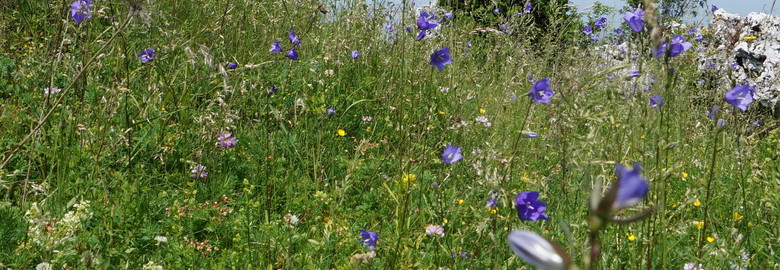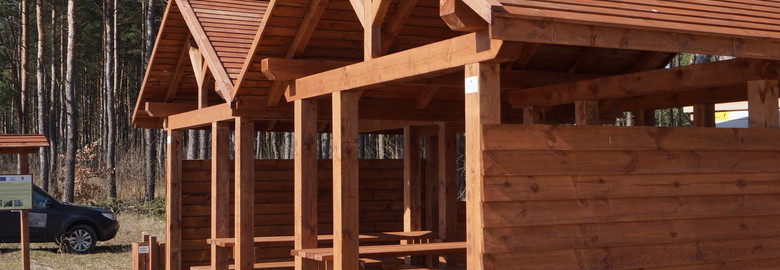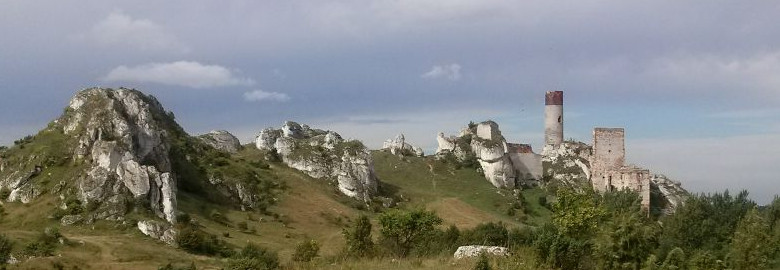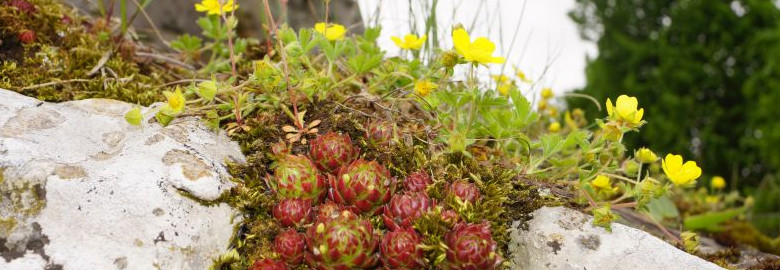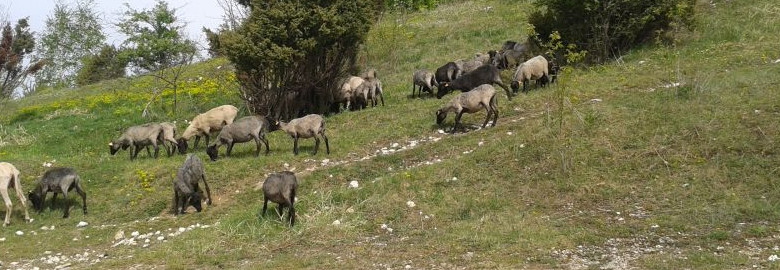About the project
Liczba wizyt
Protected plant communities and species
The project concerns the protection of chosen non-forest habitats for which the Natura 2000 refugia (the Olsztyn-Mirów refugium, the Złoty Potok refugium, the Kroczyce refugium, the Środkowa Jura refugium) were created. These include:
1. Semi-natural dry grasslands and scrubland facies on calcareous substrates (Festuco-Brometalia) (6210) - Annex I of Council Directive 92/43/EEC of 21 May 1992 on the conservation of natural habitats and of wild fauna and flora.
This plant community includes dry and semi-dry grasslands and thickets growing on calcareous substrate. The area they cover on the territories of the particular refugia included in the project equals:
- the Olsztyn-Mirów refugium: 110.5 ha,
- the Kroczyce refugium: n/d,
- the Środkowa Jura refugium: 288.4 ha (data retrieved from SDF Natura 2000).
SDF Natura 2000 does not mention the community of dry and semi-dry grasslands and thickets growing on calcareous substrate on the territory of the Złoty Potok refugium, however the research conducted by Babczyńska-Sendek (2009) and the Silesian Voivodeship Landscape Parks Complex have proved their occurrence.
Subtypes:
6210-1 Rock grassland
6210-2 Stipoideae grasslands
6210-3 Flowery dry or semi-dry grasslands on calcareous substrate
Occurring species:
2189 Galium cracoviense
The species can be found in the Kraków-Częstochowa and Wieluń Upland in six close positions near Olsztyn, i.e. Wzgórze Brodła hill, Lipówki rocks, Niwki hill, Zamkowa Góra mountain, Zajęcza Góra mountain and Łysa Góra mountain (Kucowa, 1962; Kozłowska 1928; Babczyńska, 1978).
Species status:
International law:
- The Bern Convention on the Conservation of European Wildlife and Natural Habitats (1979) – Annex I;
- The Habitats Directive (1992) – the species proposed by Poland as a supplement to Annex II (Makomaska-Juchiewicz et al., 2001); accepted by EU experts and included by the virtue of the Treaty of Accession 2003 signed in Athens.
Polish law:
- Under full species protection since 2001.
IUCN categories:
- Category V of the IUCN Red List of Threatened Species (listed in 1997);
- Category VU of the Polish Red Book of Plants (Kaźmierczakowa, Zarzycki, 2001)
- "R" (rare species) category of endangerment on the Red List of Polish Plants and Fungi (2006).
4030 The Danube Clouded Yellow butterfly (Colias myrmidone)
The species is known to have multiply positions (over 80 found in the past 15 years) in southern and eastern parts of Poland. The border of the geographical range of the species runs through Poland diagonally from the Świsłocz forest, through the vicinity of Warsaw, Tomaszów Mazowiecki and Częstochowa to Opole (Buszko, 1997).
Species status:
International law:
- The Habitats Directive (1992) – Annex II and IV.
Polish law:
- Under full species protection.
IUCN categories:
- Category VU (Invertebrate) of the Polish Red Book of Animals.
1059 The Scarce Large Blue butterfly (Phengaris teleius)
Can be found in multiply positions in Poland, the highest concentration of which, however, has been registered in the southern part of the country (Buszko, 1997). The border of the geographical range of the species runs through the north of Poland.
Species status:
International law:
- The Bern Convention on the Conservation of European Wildlife and Natural Habitats (1979) – Annex I;
- The Habitats Directive (1992) – Annex II and IV.
Polish law:
- Under full species protection.
IUCN categories:
- NR category of the IUCN Red List of Threatened Species;
- LC category of the Polish Red Book of Animals.
2. Juniper (Juniperus communis) formations on heaths or calcareous grasslands (5130) - Annex I of Council Directive 92/43/EEC of 21 May 1992 on the conservation of natural habitats and of wild fauna and flora.
Mosaic community characterized by the presence of more or less dense juniper thicket (Juniperus communis) and the plants connected with heaths or calcareous grasslands. On the territory of the Olsztyn-Mirów refugium juniper thicket formations on heaths or calcareous grasslands occur in Góry Towarne mountains and a number of other hills surrounded by the calcareous monadnocks scattered throughout the whole refugium. The habitat conditions and the manner of the thicket forming examined during the monitoring conducted in 2009 (cf. www.gios.gov.pl/siedliska/pdf) prove that the state of the protection of this habitat on the area of the refugium is improper. On the territory of the Kroczyce refugium juniper thicket occurs both on the slopes of the hills and at their feet, and partially can be found in fallows where the juniper formations are distributed evenly. They cover the vastest area near Łutowiec, Mirów, Góra Zborów hill and Rzędkowice rocks. The total area of the Kroczyce refugium covered by the juniper thicket formations has decreased from the initial 16.7 ha (1.2% of the Kroczyce refugium) to circa 7.5 ha (0.5% of the Kroczyce refugium) according to recent estimations by Babczyńska-Sendek in SDF.
3. Karst springs area of Centuria river with the species of:
*2109 Polish scurvy-grass (Cochlearia polonica)
Cochlearia polonica grew originally only in the area of Błędów Desert and Olkusz in the well-head and in the upper reaches of the Biała stream being a left bank tributary of the Biała Przemsza river. Currently Cochlearia polonica is of the Red List of Polish Plants and Fungi "EW" (extinct in the wild) category. The biggest population grows in the substituted position close to the spring of Centuria river (tributary of the Biała Przemsza) near Hutki-Kanki village. Another population, though not as numerous as the one mentioned above, can be found close to the spring of the Rajecznica river near Ołudza. The population of Cochlearia polonica in the substituted position near the spring of the Wiercica river has become extinct.
Species status:
International law:
- The Bern Convention on the Conservation of European Wildlife and Natural Habitats (1979) – Annex I;
- The Habitats Directive (1992) – the species was proposed by Poland as an supplement to Annex II; the proposal was approved by EU experts.



